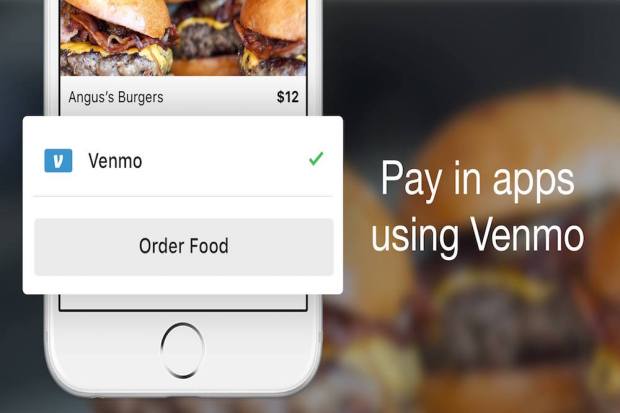Venmo’s Twist On The Buy Button

If the future of mobile payments and mobile commerce is all about Millennials and P2P, then Venmo’s could be in the right place at the right time.
Well, if you believe what the analysts say. Forrester projects that the P2P payments market will reach $17 billion in transaction volume by 2019, driven by the Millennials that like the freedom and flexibility of sending money to each other digitally.
But Venmo has ambitions to be more than just P2P – a vision that was shared last week when “Pay with Venmo” was discussed as part of PayPal’s Q4 earnings call.
“Pay with Venmo” is a “buy button” – sort of — but with its own social network twist.
“This will not just be another buy button,” PayPal CEO Dan Schulman said last week during PayPal’s earnings call. “It is the most beloved way to pay for millennials and it is highly desirable for merchants. There is tremendous demand from merchants for ‘Pay with Venmo.’”
Schulman spoke briefly during the call about the decision to allow consumers to use Venmo to pay merchants. He indicated that one big push for doing so is to connect with the app’s young, millennial user base. From the merchant perspective, there is a benefit since they can see how their users use Venmo to pay and send money (because of the social feed aspect of the app). For merchants who allow Venmo payments, they will be charged a fee of 2.9 percent of the transaction cost (plus a $0.30 charge per transaction). Users don’t pay any extra for using the service.
As for financial impact of Venmo on the company, he noted that he doesn’t expect to see “meaningful revenue” come from Venmo until 2017 or 2018. Venmo processed $2.5 billion in payment volume in 2015’s Q4, which was a 174 percent YOY increase from 2014. Overall, Venmo processed $7.5 billion in payments in 2015, which was up 213 percent from the year prior.
With one foot in P2P mobile payments, this pilot project that rolled out to a limited number of consumers shows just where Venmo plans to be — as well as how it likely plans to monetize the service (something Facebook and Snapchat have also found challenges in). The pilot kicked off in partnership with food delivery service Munchery and sports ticketing app Gametime — two Braintree merchants that fit well with its core demographic.
As for the next batch of merchants? It all depends on what the data from these test results show — something that PayPal hopes that Venmo’s social feeds can help them harvest.
But PayPal is cautions, as Venmo is a bit of a long term bet. Even though the MO for Venmo is to help monetize it, the expectations for when that might happen is in the two-three year time horizon.
“It’s a long journey to the starting line,” said Mike Vaughan, Venmo’s GM. explaining that the next year will be used as a pilot for the in-app option to play itself out and to judge just how much interest there is from consumers.
The pilot program will gradually open to more consumers and merchants, with a general public launch planned for later this year.
Inside Venmo’s Consumer Experience
To better understand the potential impact of Venmo’s latest mobile payments play, PYMNTS caught up with the Venmo team to learn why now was the time to throw their hat into the mobile payments ring.
“This is the really natural extension of what Venmo does really well. We’re just really making it possible to live in the moment,” said Adrianne Wright, Communications Lead at Venmo. “When you pay a merchant for something, it’s really not just a commercial experience where you are giving someone your money and then you walk out the door. It’s actually a lot more intimate than that. The experience is just so much more than the transaction itself.”
Wright also explained that Pay with Venmo also has the added perks like splitting the bill, a personal purchase history and the ability for users to share with their social network (if desired) — a staple of the Venmo experience.
The Venmo team also believes that tapping into the same social network features that users already interact with gives merchants the chance to create an instant connection with that user as part of the payments process.
Something that Venmo – and merchants, of course – hopes create the viral feedback loop that does Venmo’s and the merchants marketing for them. Once one user buys tickets on Gametime or orders food on Munchery, everyone in that user’s social feed will likely know – and hopefully join the fun.
Venmo’s Social Commerce Push
Venmo doesn’t disclose how many users its app has, but what Wright did disclose is that the average Venmo user opens the app about 4-5 times a week. Some of them, of course, are just using it to check in on their friends’ activity.
“It breaks through social commerce in a way that business haven’t really been able to tap into,” Wright said.
And if that behavior sticks when those consumers make payments, that could make for an interesting social twist on the “buy button.”
In terms of what’s next, Venmo isn’t ready to disclose what their future expansion plans may be for the new payments service. But what last week’s big news shows it that Venmo has big ambitions beyond just the world of P2P.